How Long Does It Take to Learn to Swim? Learning to swim is a process that varies greatly from person to person, and several factors influence the timeframe. For a complete novice, gaining confidence and comfort in water is the initial step before mastering strokes and techniques.
The time required to learn swimming basics can span a few weeks for some while others may take months. It involves understanding how to master breath control, float, and move effectively through water. Each individual’s starting point, including their comfort level with water, physical condition, and frequency of practice, plays a significant role in their progress.
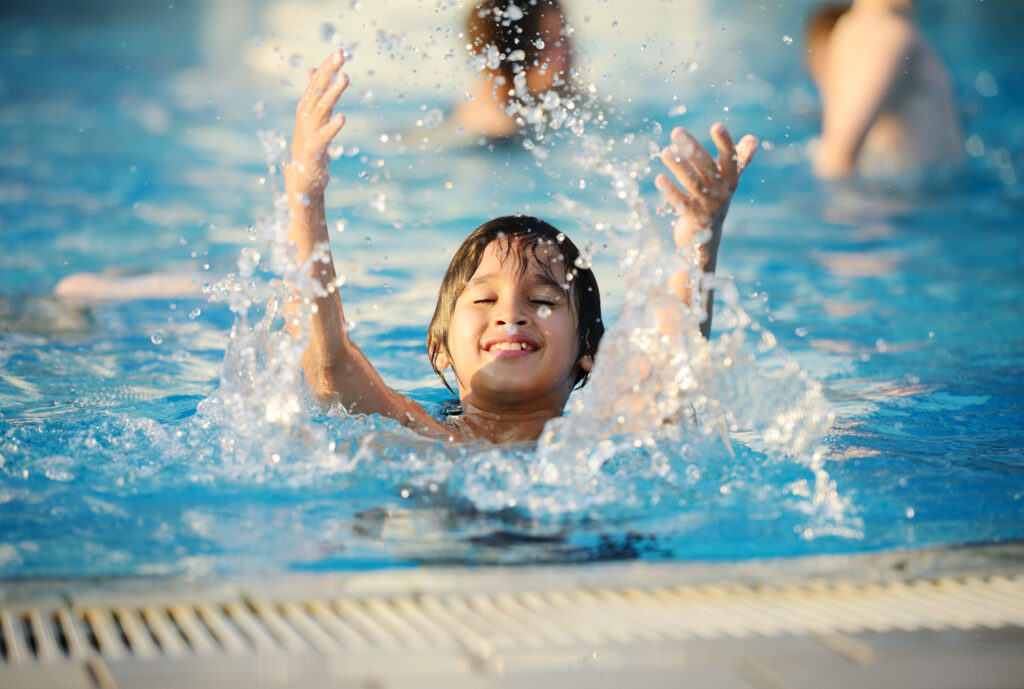
The journey of becoming a proficient swimmer often involves structured lessons and consistent practice. In a formal training setting, instructors can provide personalized feedback and structured progression. This improves the learning curve by ensuring that swimmers develop a strong foundation in the core aspects of swimming. Commitment to regular sessions and additional practice outside of formal training can significantly reduce the time it takes to become a comfortable and confident swimmer. Moreover, swimming has numerous health benefits, providing motivation beyond the skill itself to continue improving and maintaining the ability to swim.
Key Takeaways
- Skill levels and comfort with water influence the learning duration for swimming.
- Formal training and consistent practice expedite swimming proficiency.
- Regular swimming contributes to physical well-being and can incentivize continued improvement.
How Long Does It Take to Learn to Swim: Understanding the Basics of Swimming
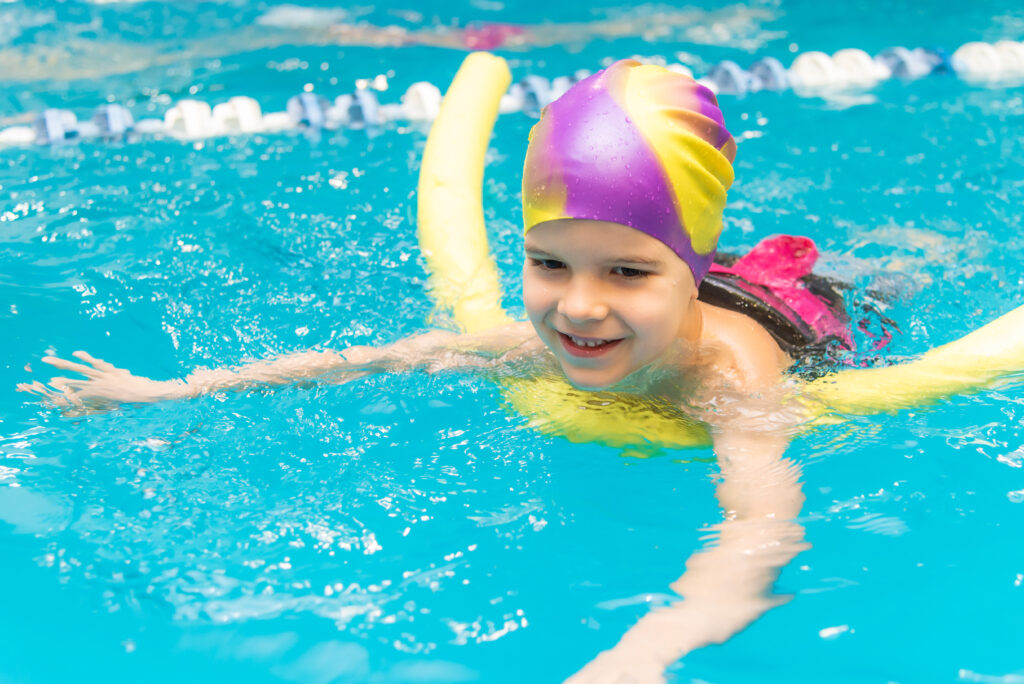
Grasping the fundamentals of swimming involves learning various strokes, building confidence in the water, and understanding essential water safety and emergency skills. These foundational areas equip individuals with the abilities to navigate in aquatic environments safely.
Learning the Strokes
Swimming strokes are the basic techniques that swimmers use to move through the water efficiently. The four main strokes to master are:
- Freestyle: Characterized by its front crawl, freestyle is often the first stroke taught, focusing on alternating arm movements and a flutter kick.
- Breaststroke: This stroke requires simultaneous horizontal arm movements and a frog kick, making timing and coordination crucial.
- Butterfly: Known for its distinct dolphin kick and simultaneous overhead arm motion, the butterfly stroke is more advanced and requires significant strength.
- Backstroke: Performed on the back, this stroke combines an alternating arm motion with a flutter kick, emphasizing a straight body line.
Building Water Confidence
Developing water confidence is critical for any beginner swimmer. Important aspects to focus on include:
- Acclimating to Water: Beginners should gradually familiarize themselves with water by first practicing in shallow areas.
- Floating Techniques: Learning to float on one’s back and front helps in gaining comfort and reducing the fear of water.
- Breath Control: Proper breathing techniques are essential, such as learning how to exhale underwater and inhale while above the surface.
Water Safety and Emergency Skills
Safety is paramount in swimming, and acquiring emergency skills is an integral part of training. Key skills involve:
- Understanding Water Conditions: Swimmers should be taught to assess conditions such as depth and current before entering the water.
- Personal Safety Techniques: Skills like treading water and staying buoyant without panicking are vital for personal safety.
- Rescue and First Aid: Basic knowledge of rescue techniques and first aid, including CPR, can potentially save lives during water-related emergencies.
Setting Realistic Expectations
Learning to swim involves both physical coordination and mental confidence. The time required can vary greatly between individuals, influenced by factors such as age and past experiences.
How Long Does It Take to Learn to Swim
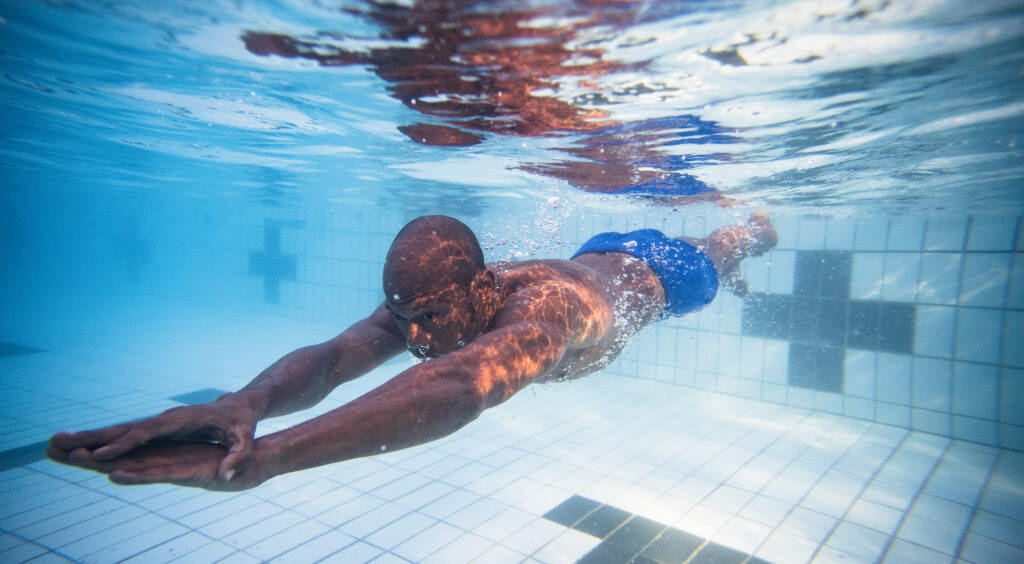
How Long Does It Take to Learn to Swim: Time Frame for Adults and Kids
Adults: Typically, adults can learn basic swim skills in 20 hours of lessons, spread across a few weeks. Individual progress may be faster or slower depending on frequency of practice and physical aptitude.
- Frequency: More frequent practice can lead to quicker learning.
- Physical Aptitude: Fitness level and natural buoyancy affect the learning curve.
Kids: Children often learn to swim faster, thanks to their adaptability and less ingrained fear. Basic skills can emerge in as little as 12 hours of instruction.
- Age Factor: Younger children can take advantage of developmental flexibility.
- Play Motivation: Children’s play can enhance skill acquisition.
Overcoming Fear and Negative Experiences
Fear of Water: A common barrier to learning is fear, which can be overcome with:
- Gradual Exposure: Slowly increasing water interaction builds comfort.
- Positive Reinforcement: Celebrating small achievements reduces anxiety.
Prior Negative Experiences: Individuals with negative past experiences might need more time and psychological support to learn swimming.
- Emotional Support: Provides reassurance to ease the learning process.
- Trauma-Informed Instruction: Instructors trained to handle past traumas can significantly aid progress.
Swimming Lessons and Formal Training

Choosing the right swim school and type of lessons, and understanding the role of a swim instructor can significantly influence the effectiveness and duration of learning to swim.
Choosing the Right Swim School
It is important to select a swim school that is reputable and has certified swim instructors. Factors such as accreditation, facility quality, and the school’s approach to teaching should be considered. Many schools offer specific programs for different age groups and skill levels. Researching and comparing swim schools’ offerings can help ensure the chosen program aligns with the learner’s needs.
Private Versus Group Lessons
Swimming lessons are typically offered in two formats: private lessons and group lessons. Private lessons provide one-on-one instruction tailored to the student’s pace, which can be beneficial for rapid progress or addressing specific challenges. Group lessons, on the other hand, are often more affordable and can provide a social setting that encourages learning through observation and interaction.
Role of a Swim Instructor
A certified swim instructor is crucial in providing quality swimming education. They assess a student’s level, set achievable goals, and develop a structured lesson plan. A good instructor also ensures a safe learning environment, provides constructive feedback, and utilizes various techniques to address individual learning styles. Their expertise and teaching style can greatly affect a student’s motivation and success in learning how to swim.
How Long Does It Take to Learn to Swim
Practical Tips for Learning to Swim
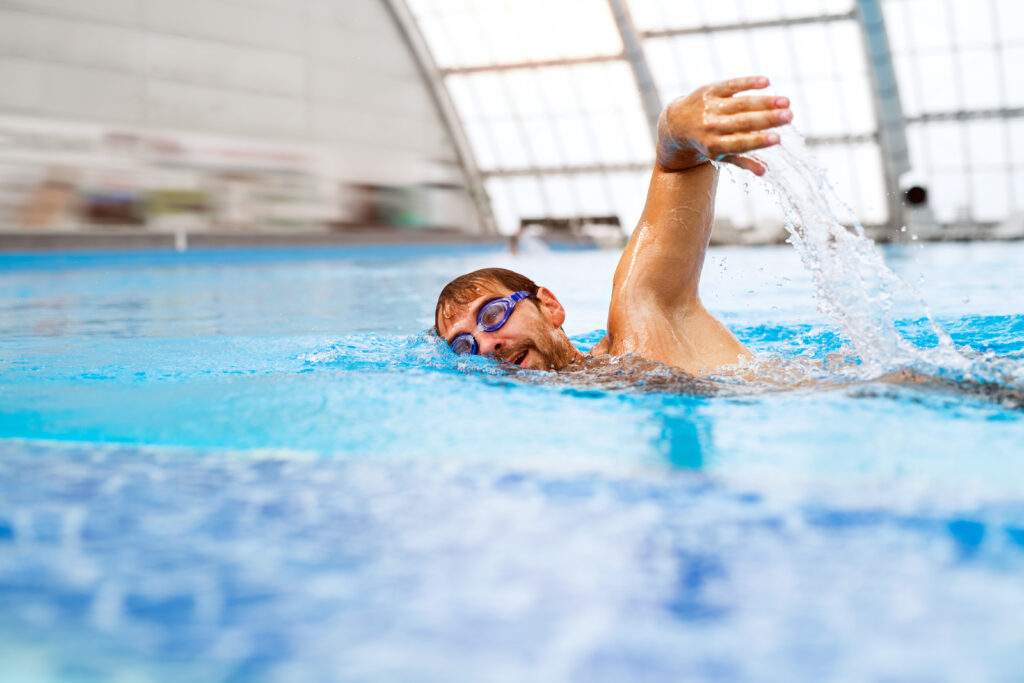
To effectively learn swimming, integrating a consistent practice routine, refining techniques, and employing drills are crucial for skill enhancement.
Developing a Regular Practice Routine
A consistent practice schedule is the cornerstone of learning to swim. Swimmers should aim to practice multiple times a week—frequency aids in muscle memory and builds endurance. Consistency is key; sticking to a routine accelerates progress.
- Frequency: Ideally, practice 3-4 times a week.
- Duration: Each session should last at least 30 minutes to an hour.
- Progression: Gradually increase practice time and intensity.
Refining Swimming Technique
Technique is essential in swimming to ensure efficiency in the water. Swimmers must focus on proper breathing, body alignment, and stroke mechanics.
- Breathing: Practice bilateral breathing to balance stroke.
- Body Alignment: Maintain a streamlined position to reduce drag.
- Stroke Mechanics: Concentrate on each part of the stroke cycle.
Utilize visual aids like mirrors or video recordings to analyze and improve technique. Seek feedback from a coach or experienced swimmer for targeted advice.
Using Drills to Enhance Skills
Drills are targeted exercises that improve specific aspects of swimming technique. They break down complex motions into manageable parts.
- Kick Drills: For leg strength and proper kick technique.
- Pull Drills: To enhance arm strength and stroke efficiency.
- Rotation Drills: To improve body roll and coordination.
Example Drill Table
| Drill Type | Purpose | How to Perform |
|---|---|---|
| Kick Drills | Strengthen legs and improve flutter kick | Hold a kickboard and focus on kicking from the hips. |
| Pull Drills | Develop arm and upper body strength | Use a pull buoy to isolate the arms and practice pulling through the water. |
| Rotation Drills | Optimize body rotation | Rotate your body with each stroke, focusing on aligning your shoulders with each turn. |
Regularly incorporating these drills into practice sessions can dramatically improve one’s swimming skills.
How Long Does It Take to Learn to Swim
Physical and Health Benefits of Swimming
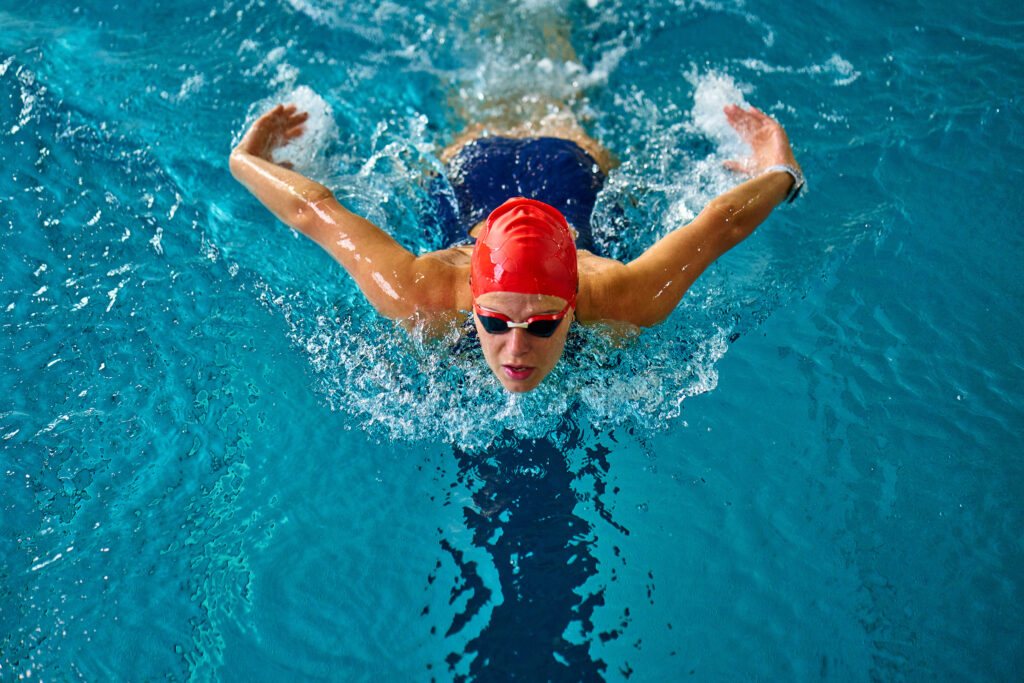
Swimming offers a myriad of health benefits, touching upon cardiovascular strength, muscle development, and mental wellness.
Cardiovascular and Muscular Workout
Swimming engages the entire body, providing a high-quality cardiovascular workout that strengthens the heart and improves circulation. Regular participation in swimming can lead to improved heart health and reduced risk of heart disease. Additionally, swimming involves multiple muscle groups across the body, from the arms and shoulders to the legs and core, promoting muscular endurance and flexibility. The resistance of water means that each stroke serves as a form of strength training without the harsh impact on joints found in many other forms of exercise.
- Heart: Consistent swimming boosts heart rate and enhances its function.
- Muscles: A comprehensive workout that involves all major muscle groups.
Mental Health and Stress Relief
The benefits of swimming extend beyond physical health, touching upon psychological well-being. Many individuals find swimming to be a therapeutic activity that reduces stress and anxiety levels. Being in water has a calming effect on the mind, and the rhythmic nature of swimming can be meditative. The release of endorphins during physical activities like swimming contributes to improved mood and a sense of relaxation.
- Stress Relief: Swimming reduces cortisol levels, aiding in stress and tension reduction.
- Mental Health: Regular swimming can lead to improvements in mental health, including reduced symptoms of anxiety and depression.
Becoming a Confident Swimmer
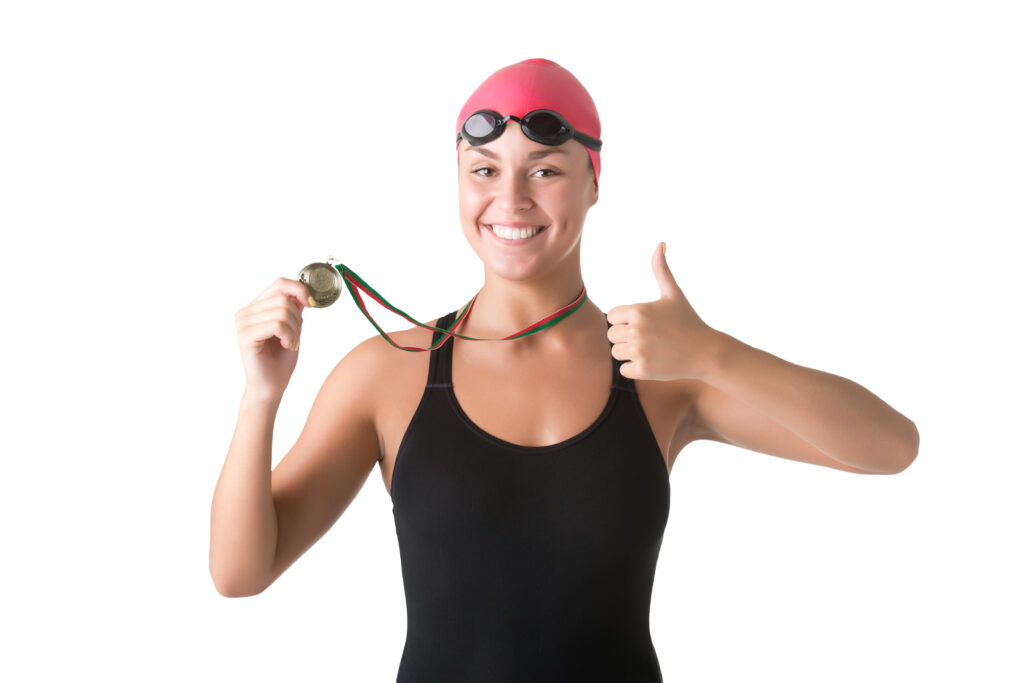
Becoming a confident swimmer typically involves mastering basic techniques, adjusting to varying depths of water, and continuously expanding one’s repertoire of swimming skills. These foundational aspects ensure a smooth progression from novice to adept.
Mastering Breathing Techniques
Breathing is a core element of swimming efficiency and comfort in the water. Those learning to swim should focus on rhythmic breathing, which involves coordinating breaths with strokes. A common practice is the bilateral breathing technique, which means alternating breathing sides every three strokes to maintain balance in the water. Effective breathing patterns prevent exhaustion and enable swimmers to maintain a steady pace.
Transitioning to Deeper Water
After gaining confidence in a shallow pool, swimmers should gradually advance to deeper waters. This transition is critical as it teaches individuals how to remain calm and composed when the pool floor is out of reach. Initial sessions in deeper water should include activities such as floating, treading water, and simple strokes to build confidence and reinforce the feeling of buoyancy.
Expanding Swimming Skills
As proficiency grows, expanding swimming skills is vital for a swimmer’s development. Incorporating a variety of strokes—such as the freestyle, backstroke, breaststroke, and butterfly—adds versatility to a swimmer’s skill set. Drills and structured swim sets can help in improving speed, endurance, and technique. It’s also essential for swimmers to practice turning and safe diving practices to complete their skill set. With each new skill mastered, swimmers enhance their confidence and enjoyment in the water.
How Long Does It Take to Learn to Swim
Advanced Swimming Goals
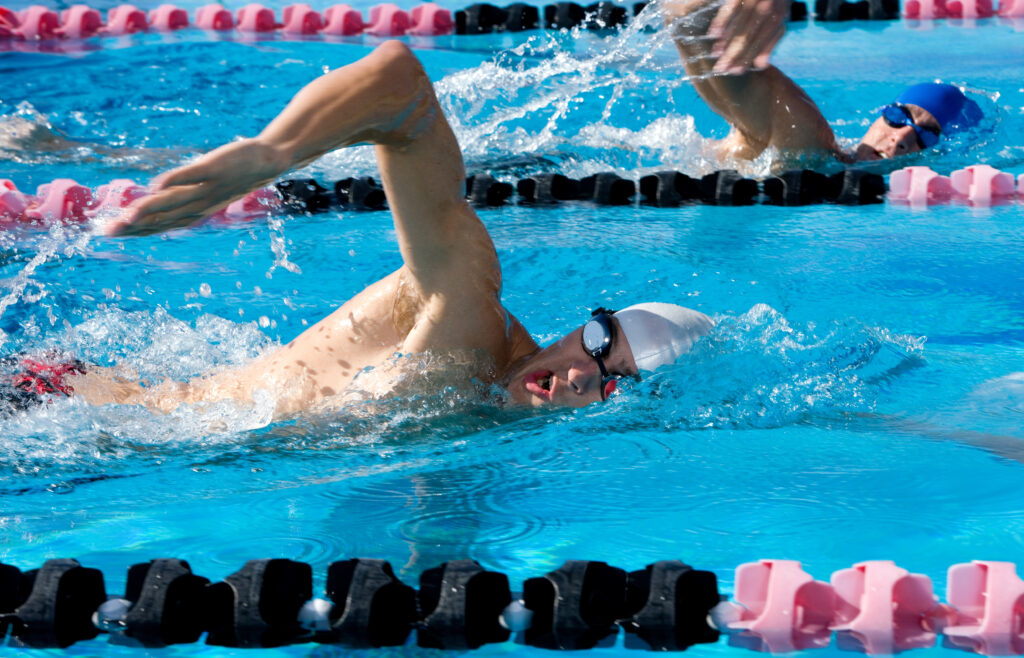
Once a swimmer has mastered the basics, set advanced goals to further improve skills. These goals often revolve around enhancing speed, endurance, and overall swimming technique, with some swimmers aiming for competitive swimming at events like triathlons.
Training for Speed and Endurance
To swim faster and build endurance, an athlete must stick to a rigorous training schedule. Successful swimmers incorporate interval training in their routines, focusing on short bursts of high-intensity swimming followed by recovery periods.
- Interval training example: Set Distance Intensity Rest Period 1 50m High 30s 2 100m Medium 45s 3 200m High 60s 4 400m Low 90s
Drills that improve swimming technique are also crucial; they ensure that each stroke is as efficient as possible, reducing drag and conserving energy.
Preparing for Competitive Swimming
Competitive swimmers often have a specialized regime designed to refine their technique, increase speed, and build athletic resilience. Swimmers training for events like the triathlon must balance swimming with cycling and running, which requires an adaptable training schedule.
- Triathlon swim training aspects:
- Focus on open water swimming skills.
- Practice navigation while swimming in a straight line without pool edges for guidance.
- Simulate race conditions, incorporating wetsuit swims and sighting techniques.
Concerns for Beginner Swimmers
Beginner swimmers transitioning to advanced goals should be mindful of overtraining and the importance of proper technique. While they may feel eager to progress quickly, they must give equal importance to rest and recovery to prevent injuries. Coaches emphasize the necessity of a solid foundation in swimming technique before pushing for speed and endurance. This is because improper technique not only hampers performance but also increases the risk of strain or injury.
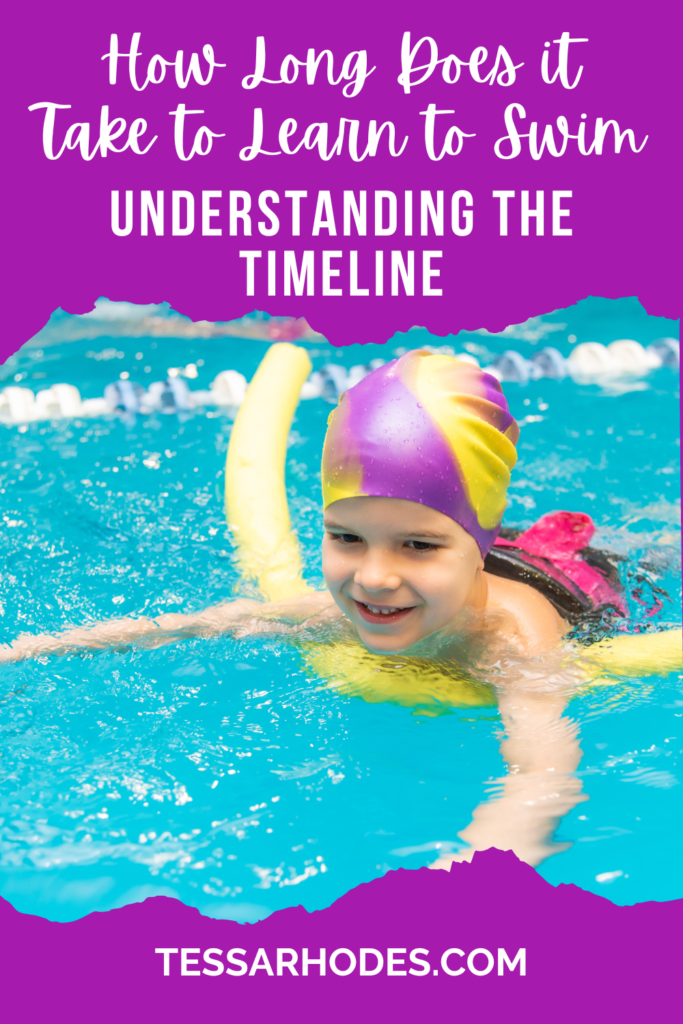
How Long Does It Take to Learn to Swim
Leave a Reply